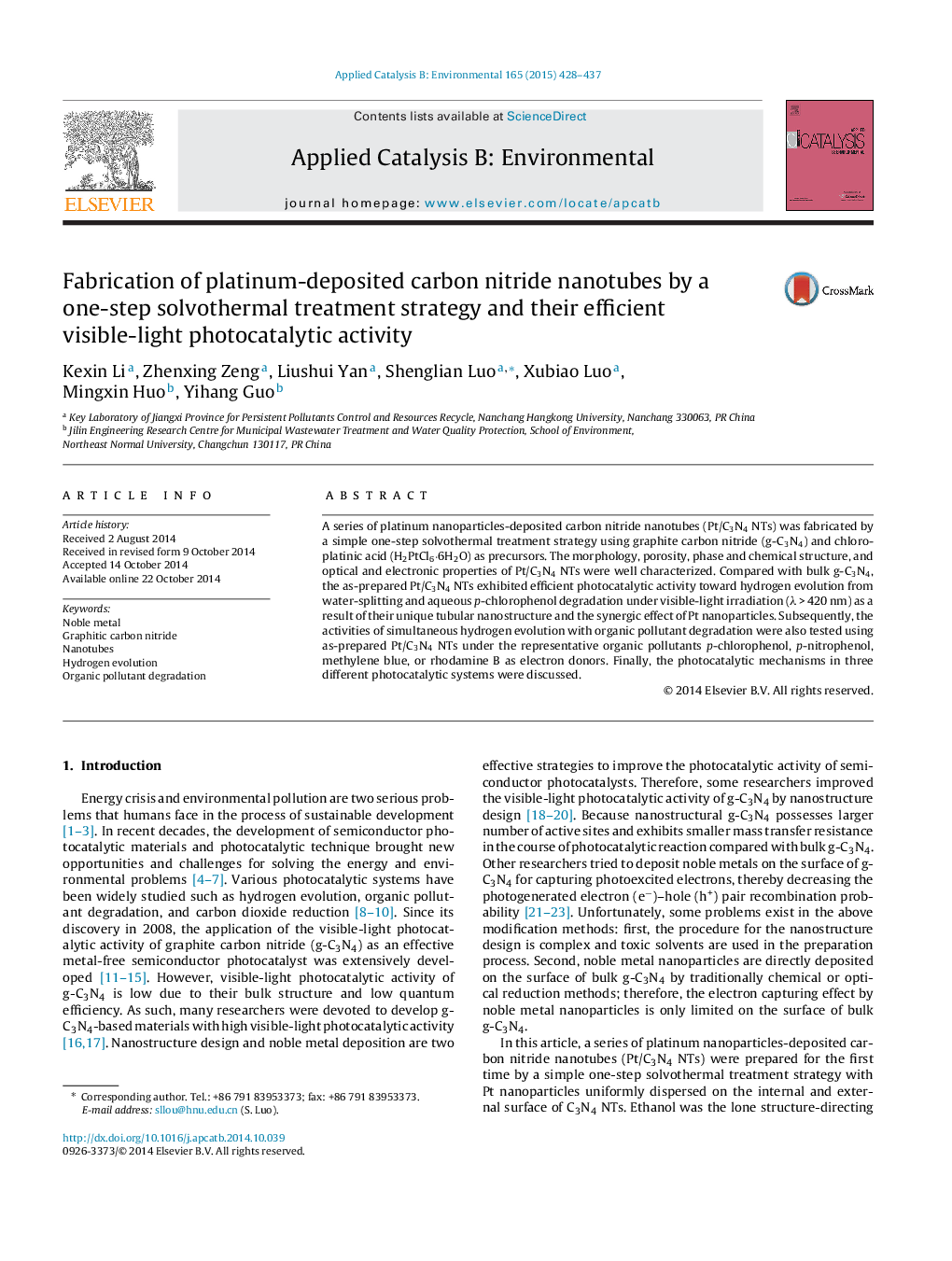| Article ID | Journal | Published Year | Pages | File Type |
|---|---|---|---|---|
| 45573 | Applied Catalysis B: Environmental | 2015 | 10 Pages |
•Pt/C3N4 NTs were successfully prepared by one-step solvothermal treatment strategy.•Their morphology, structure, and optoelectronic property were well characterized.•Pt/C3N4 NTs exhibit obviously higher visible-light catalytic activity than g-C3N4.•The efficient activity is attributed to tubular structure and synergic effect of Pt.
A series of platinum nanoparticles-deposited carbon nitride nanotubes (Pt/C3N4 NTs) was fabricated by a simple one-step solvothermal treatment strategy using graphite carbon nitride (g-C3N4) and chloroplatinic acid (H2PtCl6·6H2O) as precursors. The morphology, porosity, phase and chemical structure, and optical and electronic properties of Pt/C3N4 NTs were well characterized. Compared with bulk g-C3N4, the as-prepared Pt/C3N4 NTs exhibited efficient photocatalytic activity toward hydrogen evolution from water-splitting and aqueous p-chlorophenol degradation under visible-light irradiation (λ > 420 nm) as a result of their unique tubular nanostructure and the synergic effect of Pt nanoparticles. Subsequently, the activities of simultaneous hydrogen evolution with organic pollutant degradation were also tested using as-prepared Pt/C3N4 NTs under the representative organic pollutants p-chlorophenol, p-nitrophenol, methylene blue, or rhodamine B as electron donors. Finally, the photocatalytic mechanisms in three different photocatalytic systems were discussed.
Graphical abstractFigure optionsDownload full-size imageDownload as PowerPoint slide
